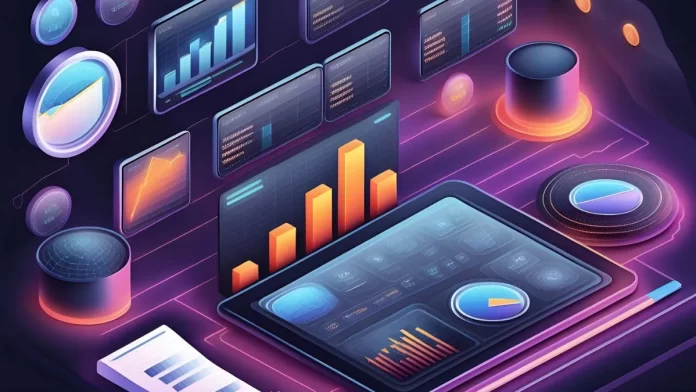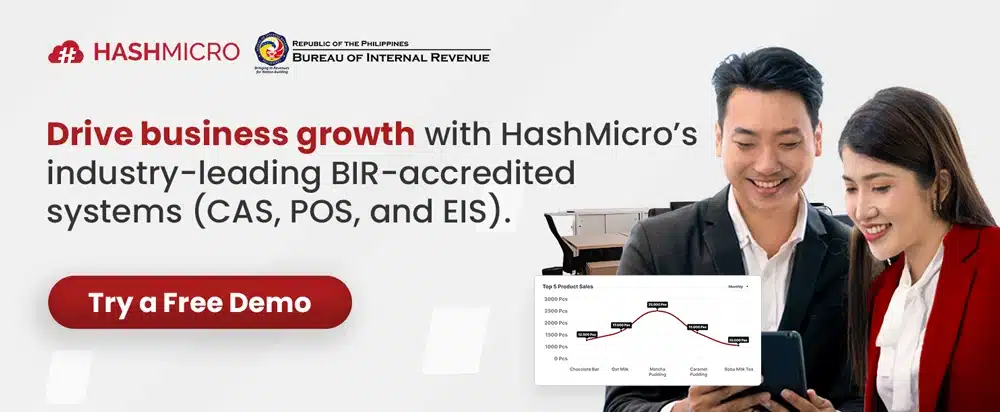Starting from 2025, publicly listed companies in the Philippines will need to disclose their sustainability performance, including carbon emissions, which can be calculated with carbon accounting software. It’s a strategic shift and businesses that act early will have the edge.
But for most companies, tracking carbon emissions isn’t easy. Data is often scattered across departments, stuck in spreadsheets, or missing altogether. Without the right systems in place, meeting new disclosure requirements can quickly turn into a stressful, manual process.
One of the solutions that a business can implement is by using carbon emissions tracking software. However, which one can you choose? It’s a new field, after all, and the choices are not as solid as your typical systems that have weathered the test of time.
So, in this article, we’ve picked 15 of the best carbon accounting tools in 2025 to help you track and report emissions. Nagsisimula ka man o nagpapalaki, may solusyon na nababagay sa iyong negosyo.
Key Takeaways
|
Table of Contents
What is Carbon Accounting Software?
Carbon accounting software helps businesses measure, monitor, and manage their greenhouse gas emissions. With it, companies can collect accurate emissions data and begin planning meaningful strategies to reduce, or eventually eliminate, their carbon footprint through decarbonization.
These platforms are typically built around the Greenhouse Gas Protocol (GHGP), which serves as the global standard for emissions tracking. Although referred to as “carbon” accounting, the term broadly includes various greenhouse gases, such as:
- Methane
- Nitrous oxide
- Hydrofluorocarbons
- Perfluorochemicals
- Sulfur hexafluoride
- And other related gases
In the Philippines, the Securities and Exchange Commission (SEC) has rolled out ESG reporting guidelines for publicly listed companies, aligning with global ESG frameworks.
As pressure for transparency grows, many Filipino businesses are turning to software solutions to simplify emissions tracking and prepare for future climate-related disclosures.
15 Best Carbon Accounting Software in 2025
With growing pressure from regulators, investors, and customers, carbon accounting has become a top priority for businesses in 2025.
To help you navigate the options, here are 15 best carbon accounting software in the Philippines, each offering unique features to support your sustainability journey.
1. HashMicro
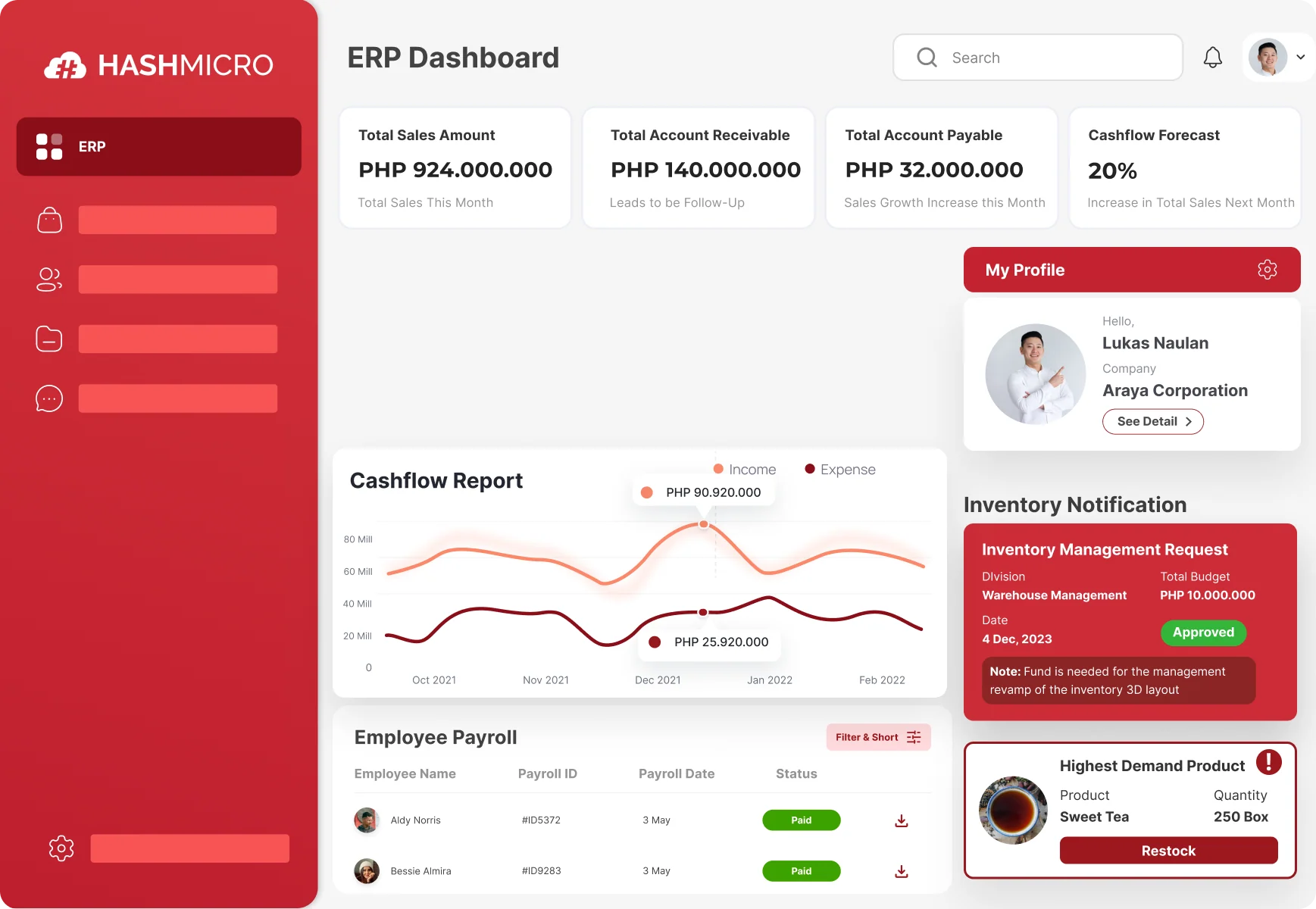 You can’t manage what you can’t measure. And you can’t measure carbon if your operational data is scattered across spreadsheets, emails, and disconnected systems. That’s where HashMicro ERP steps in.
You can’t manage what you can’t measure. And you can’t measure carbon if your operational data is scattered across spreadsheets, emails, and disconnected systems. That’s where HashMicro ERP steps in.
While it’s not a traditional carbon accounting platform, HashMicro helps businesses build the foundation for effective ESG reporting. If you want to see whether the software suits you, you can try a demo for free.
From tracking electricity and fuel usage to monitoring supplier activity and production inputs, HashMicro centralizes the data you’ll need for Scope 1, 2, and 3 reporting.
Whether you’re preparing for the upcoming sustainability reports, working with sustainability consultants, or simply trying to map out your carbon footprint, HashMicro provides the structured operational visibility that ESG efforts rely on.
Features:
- Automated ESG Reporting: Create ESG reports using real-time data from operations, with auto-generated formats aligned to global standards.
- Carbon Footprint & Energy Monitoring: Track electricity use, emissions, and waste across sites to monitor environmental impact and support reduction goals.
- Built-in Regulatory Compliance Tools: Stay aligned with evolving ESG rules (e.g. CSRD, local environmental regulations) using auto-generated audit-ready documentation.
- CSR & Workforce Well-being Metrics: Record and report on employee diversity, welfare, and community initiatives as part of your social impact reporting.
- Governance & Risk Controls: Centralize corporate policies, ethics disclosures, and ESG risk assessments for transparent governance.
- Sustainable Supply Chain Management: Monitor supplier ESG performance to ensure ethical sourcing and identify risks across your value chain.
| Pros | Cons |
|
|
2. Microsoft Sustainability Cloud
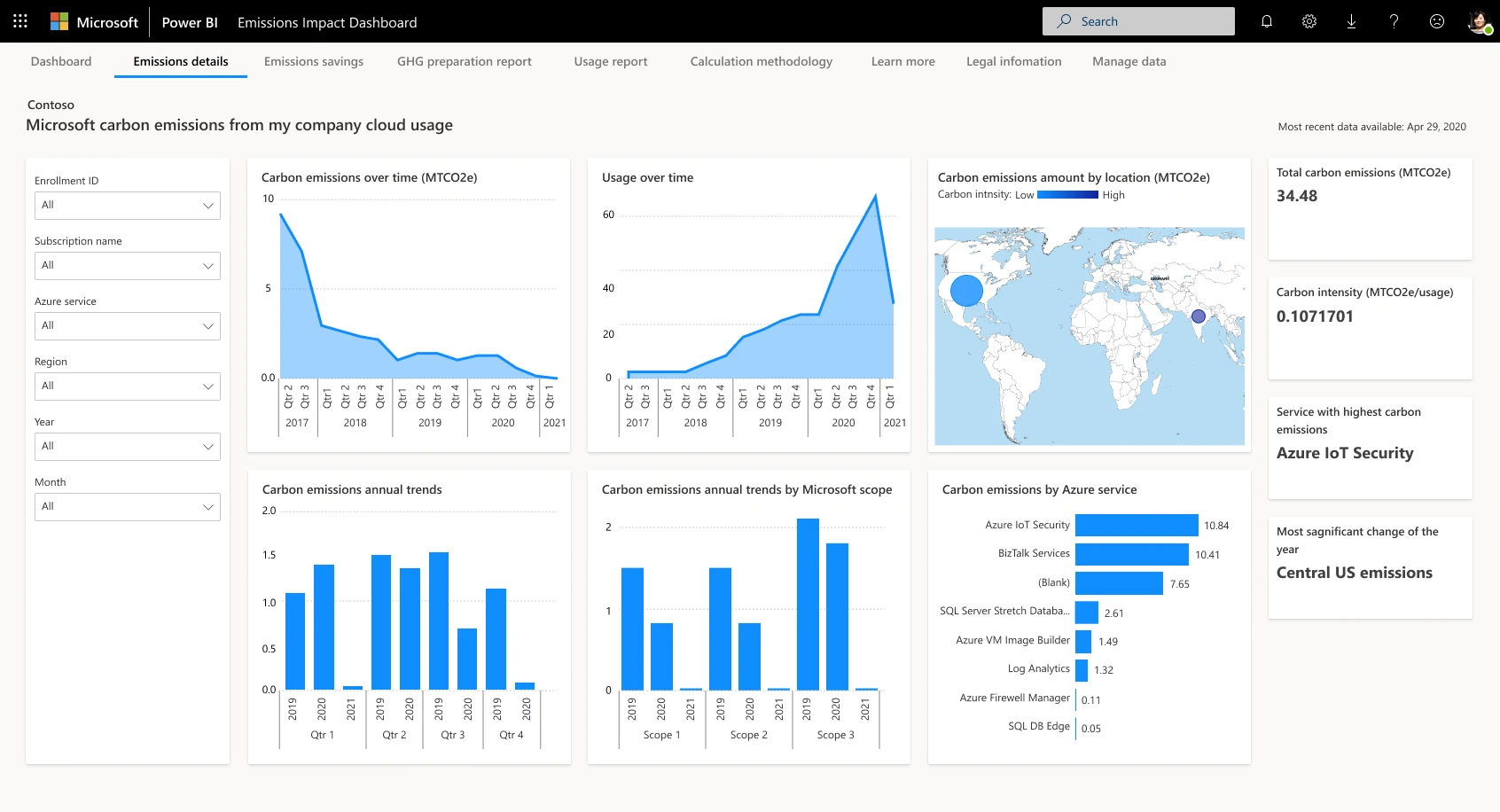 Microsoft Sustainability Cloud provides a range of carbon accounting tools to help organizations track and disclose their environmental performance. Its central feature, Sustainability Manager, allows businesses to gather, analyze, and visualize key sustainability data.
Microsoft Sustainability Cloud provides a range of carbon accounting tools to help organizations track and disclose their environmental performance. Its central feature, Sustainability Manager, allows businesses to gather, analyze, and visualize key sustainability data.
The platform works seamlessly with other Microsoft products. Therefore, companies already in the Microsoft ecosystem can manage their ESG data more efficiently.
Features:
- Scope 1, 2 and (limited) Scope 3 footprint
- Deep Microsoft suite integration
- Sustainable IT infrastructure
- Value chain engagement module
- Emissions monitoring
| Pros | Cons |
|
|
3. Net Zero Cloud by Salesforce
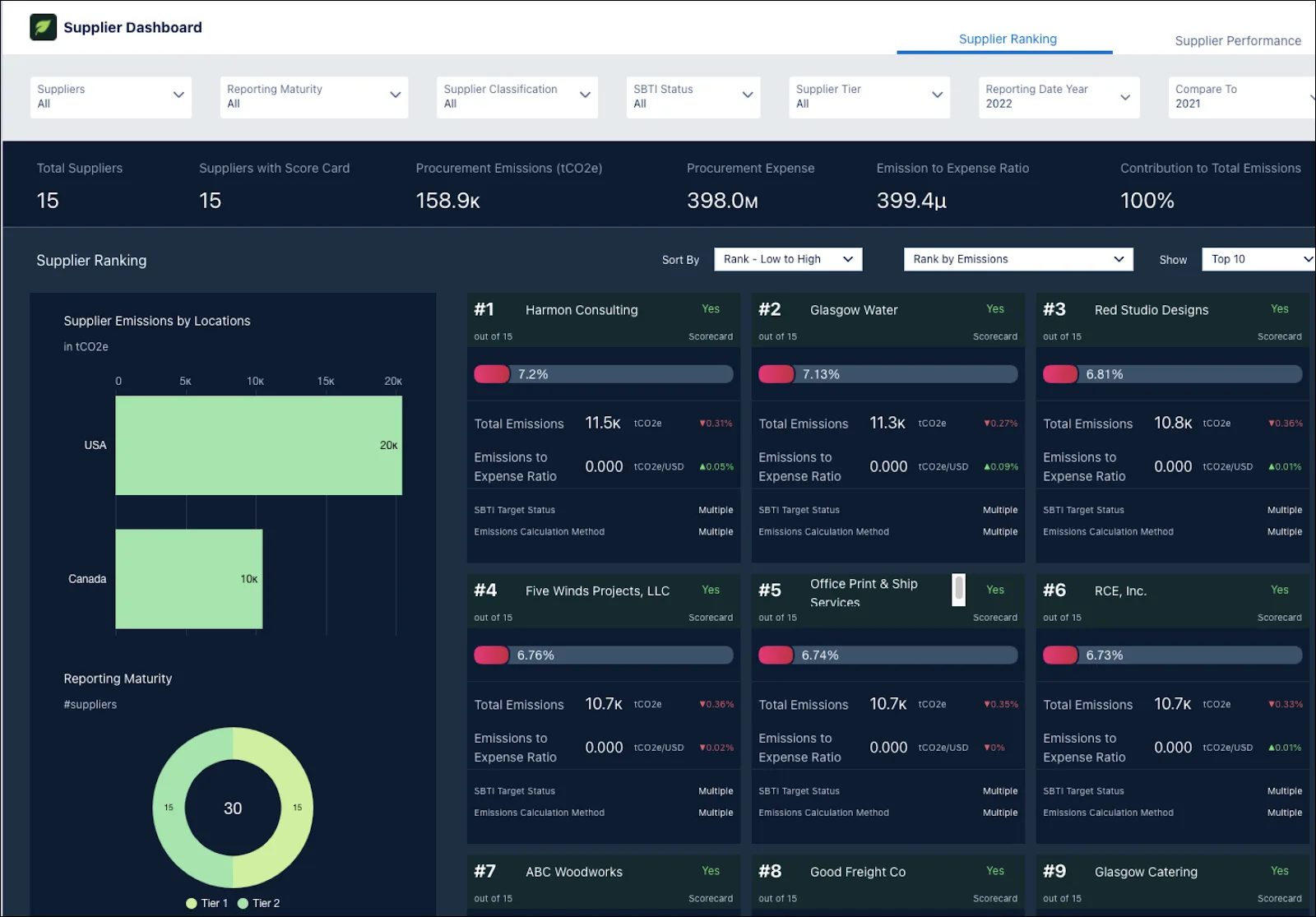 Salesforce Net Zero Cloud is a carbon emissions tracking software built to help enterprises monitor and lower their emissions. Powered by Salesforce’s cloud infrastructure, it offers robust analytics and reporting features.
Salesforce Net Zero Cloud is a carbon emissions tracking software built to help enterprises monitor and lower their emissions. Powered by Salesforce’s cloud infrastructure, it offers robust analytics and reporting features.
The platform enables organizations to calculate their carbon footprint across Scope 1, 2, and 3, set science-based reduction targets, and track their progress toward achieving sustainability objectives.
Features:
- Travel-related emissions
- Energy-related emissions
- Full ERP integration
- Science-based targets
- Emissions forecasting
| Pros | Cons |
|
|
4. Coolset
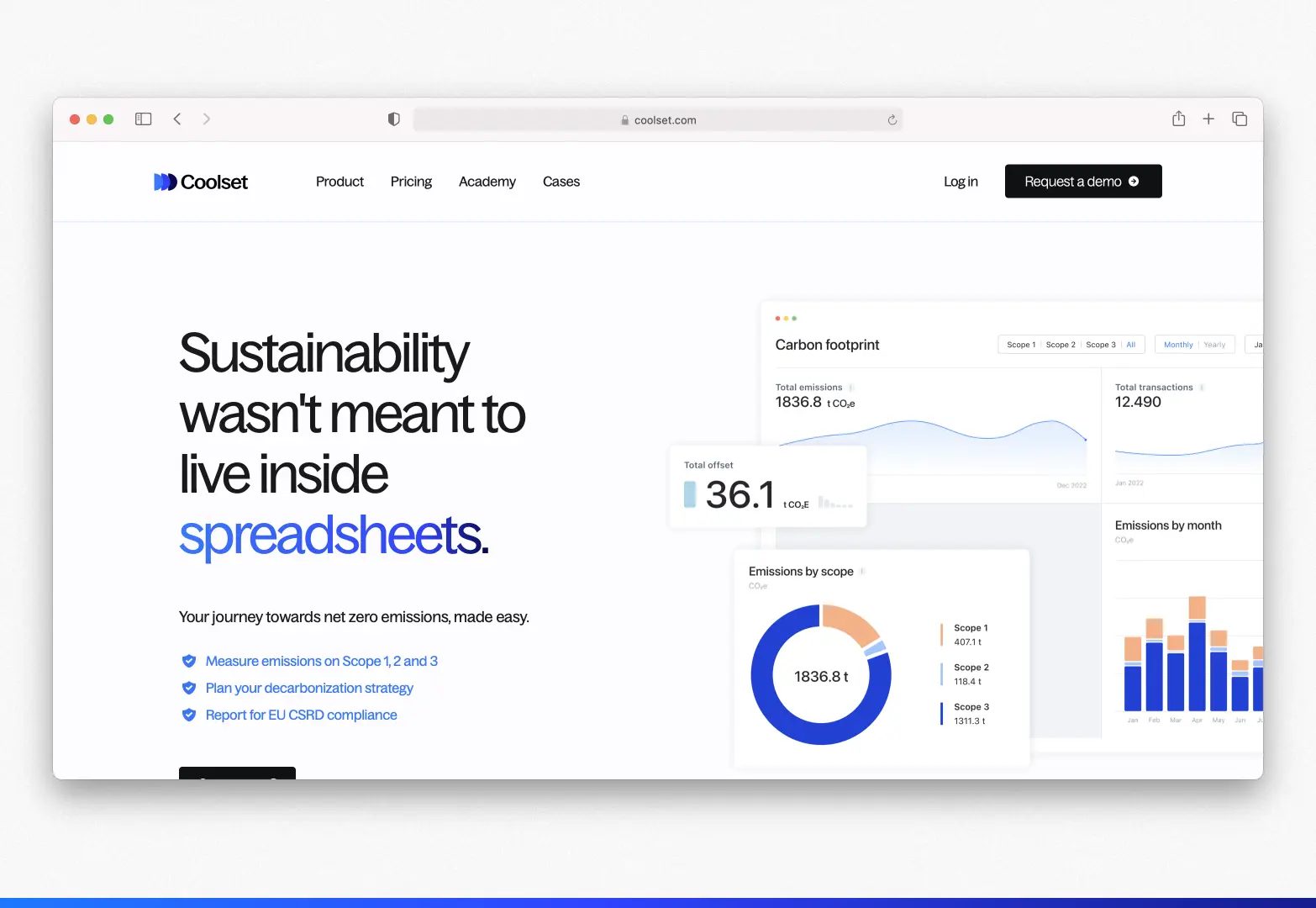 Coolset is a carbon accounting and reporting platform developed for mid-sized companies aiming to manage their emissions more effectively. It supports the measurement, analysis, reduction, and removal of emissions.
Coolset is a carbon accounting and reporting platform developed for mid-sized companies aiming to manage their emissions more effectively. It supports the measurement, analysis, reduction, and removal of emissions.
The platform also assists businesses in aligning with sustainability frameworks such as the CSRD, EU Taxonomy, and VSME, helping to streamline ESG reporting and compliance processes.
Features:
- Scope 1, 2, and 3 emission tracking
- Product carbon footprint calculation
- Data collection
- Reporting and analytics
| Pros | Cons |
|
|
5. Watershed
![]() Watershed is a climate platform built for large enterprises to manage their carbon emissions. It enables companies to calculate their carbon footprint, produce reports aligned with international regulations, and set measurable targets to reduce emissions over time.
Watershed is a climate platform built for large enterprises to manage their carbon emissions. It enables companies to calculate their carbon footprint, produce reports aligned with international regulations, and set measurable targets to reduce emissions over time.
The platform also ensures emissions data is audit-ready, supporting regulatory compliance, business strategy, and broader climate objectives.
Features:
- Carbon footprint measurements
- Tailored reporting
- Carbon removal and avoidance
- CDP submission support
- Lifecycle analysis
| Pros | Cons |
|
|
6. Sinai Technologies
 Sinai Technologies focuses on supporting decarbonization through advanced modeling and planning tools. It enables organizations to reduce emissions in line with key targets while identifying opportunities for growth and managing greenhouse gas output.
Sinai Technologies focuses on supporting decarbonization through advanced modeling and planning tools. It enables organizations to reduce emissions in line with key targets while identifying opportunities for growth and managing greenhouse gas output.
While its toolset may be less accessible compared to other options, this may not be a drawback for businesses that are already prioritizing a decarbonization-driven strategy.
Features:
- Scope 1–3 emissions tracking
- Science-based target alignment
- Internal carbon pricing
- Decarbonization strategy advisory
- Advanced emissions forecasting
| Pros | Cons |
|
|
7. IBM Environmental Intelligence Suite
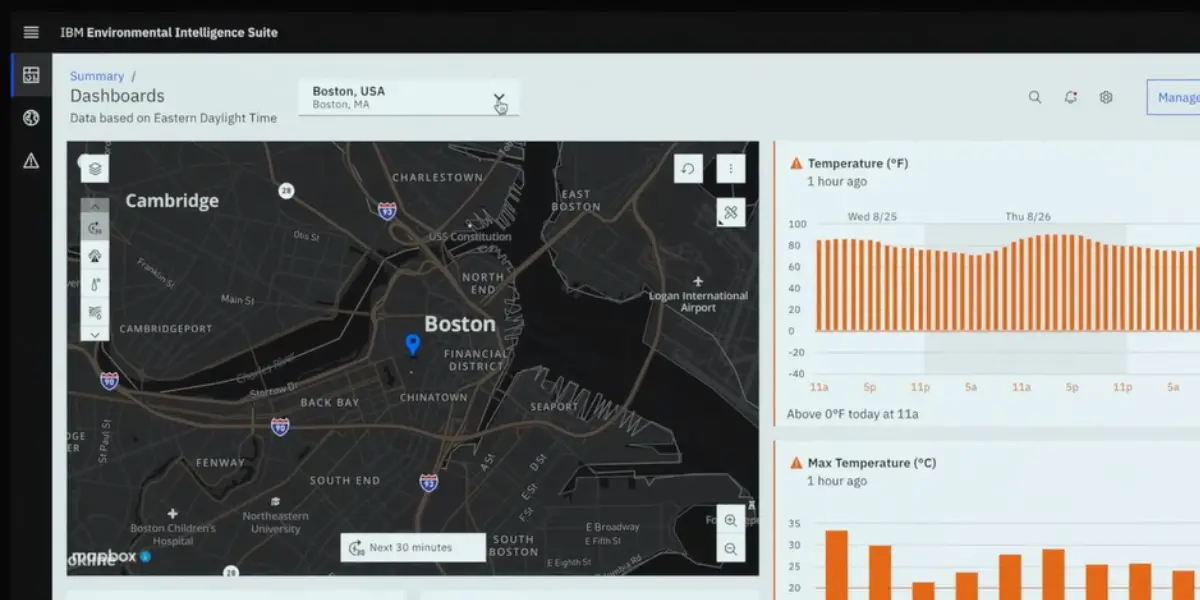 IBM Environmental Intelligence Suite is an established platform developed to support organizations in managing environmental data and emissions. It includes foundational climate risk analytics powered by AI, offering tools for evaluating and responding to environmental risks.
IBM Environmental Intelligence Suite is an established platform developed to support organizations in managing environmental data and emissions. It includes foundational climate risk analytics powered by AI, offering tools for evaluating and responding to environmental risks.
The suite is designed to embed carbon accounting into wider business operations, helping companies track and manage their environmental performance.
Features:
- Climate risk analytics
- Weather forecasting
- Geospatial analysis
- Carbon performance engine
- Alerting system
| Pros | Cons |
|
|
8. Plan A
![]() Plan A is a German SaaS provider offering software solutions for corporate decarbonization and ESG performance. The platform integrates advanced technology with up-to-date scientific frameworks to help businesses align with their sustainability goals.
Plan A is a German SaaS provider offering software solutions for corporate decarbonization and ESG performance. The platform integrates advanced technology with up-to-date scientific frameworks to help businesses align with their sustainability goals.
It supports the full net-zero journey—enabling users to collect, process, report, and reduce emissions all within one system.
Features:
- Comprehensive data collection
- Automated carbon footprint calculations
- Emissions reporting
- Decarbonisation target setting
- Progress tracking and analytics
| Pros | Cons |
|
|
9. Sphera
![]() Sphera provides a carbon accounting platform focused on ESG and risk management. Its software is designed to centralize emissions tracking and streamline environmental data oversight, with the goal of integrating sustainability and safety practices across an organization.
Sphera provides a carbon accounting platform focused on ESG and risk management. Its software is designed to centralize emissions tracking and streamline environmental data oversight, with the goal of integrating sustainability and safety practices across an organization.
The solution supports businesses in monitoring carbon emissions and managing broader environmental and safety-related metrics.
Features:
- Emissions inventory management
- Scope 3 emissions management
- Scenario assessment tools
- Integration with regulatory frameworks
- Data analysis
| Pros | Cons |
|
|
10. Persefoni
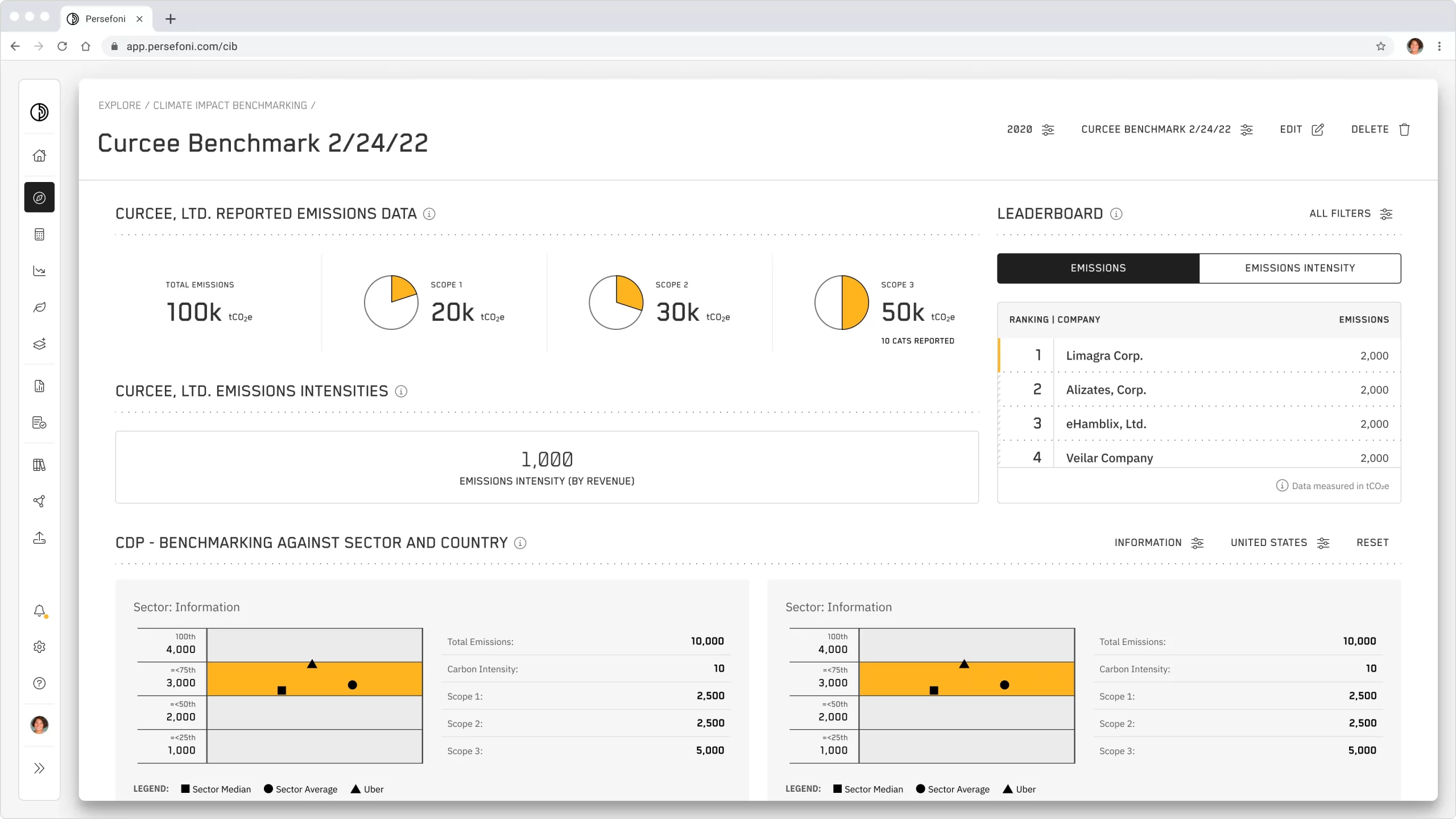 Persefoni is an AI-driven ESG software designed to support carbon measurement, reporting, and decarbonization efforts. Tailored for large enterprises and financial institutions, it delivers high-assurance emissions reporting aligned with major climate disclosure standards.
Persefoni is an AI-driven ESG software designed to support carbon measurement, reporting, and decarbonization efforts. Tailored for large enterprises and financial institutions, it delivers high-assurance emissions reporting aligned with major climate disclosure standards.
The platform also includes tools for setting net-zero goals and managing complex decarbonization strategies
Features:
- Corporate emissions tracking
- Evaluation of financed emissions
- Advisory services on climate-related policies
- Support for SEC-aligned climate disclosures
| Pros | Cons |
|
|
11. Normative
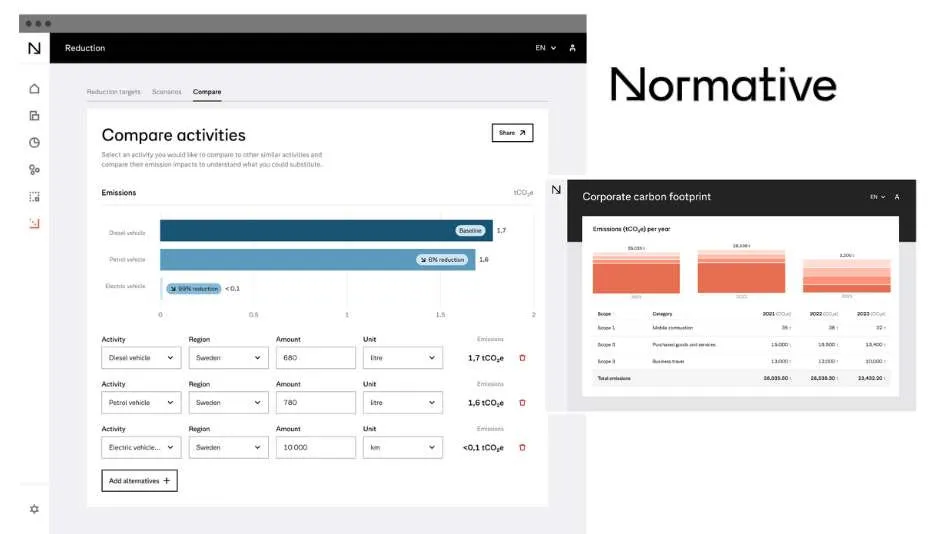 Normative is a carbon footprint software designed to help industrial companies accurately measure their emissions. Using a data-driven approach similar to traditional accounting, Normative applies precise calculations to deliver trustworthy carbon insights.
Normative is a carbon footprint software designed to help industrial companies accurately measure their emissions. Using a data-driven approach similar to traditional accounting, Normative applies precise calculations to deliver trustworthy carbon insights.
Its Climate Strategists also support businesses in identifying emission reduction opportunities, managing climate-related risks, and uncovering growth potential in a net-zero economy.
Features:
- Comprehensive carbon accounting engine
- Reduction scenario modeling
- Impact explorer tool
- Supplier forecast data
- Climate strategy advisory
| Pros | Cons |
|
|
12. SmartTrackers
![]() SmartTrackers is a versatile sustainability platform that enables businesses to monitor and evaluate their performance in areas like CO₂ emissions, safety, and overall sustainability.
SmartTrackers is a versatile sustainability platform that enables businesses to monitor and evaluate their performance in areas like CO₂ emissions, safety, and overall sustainability.
It provides clear insights into environmental impact, streamlines reporting responsibilities, and supports compliance with relevant standards and regulations.
Features:
- Data collection
- Automated calculations
- Visualizations
- Custom reporting
| Pros | Cons |
|
|
13. Emitwise
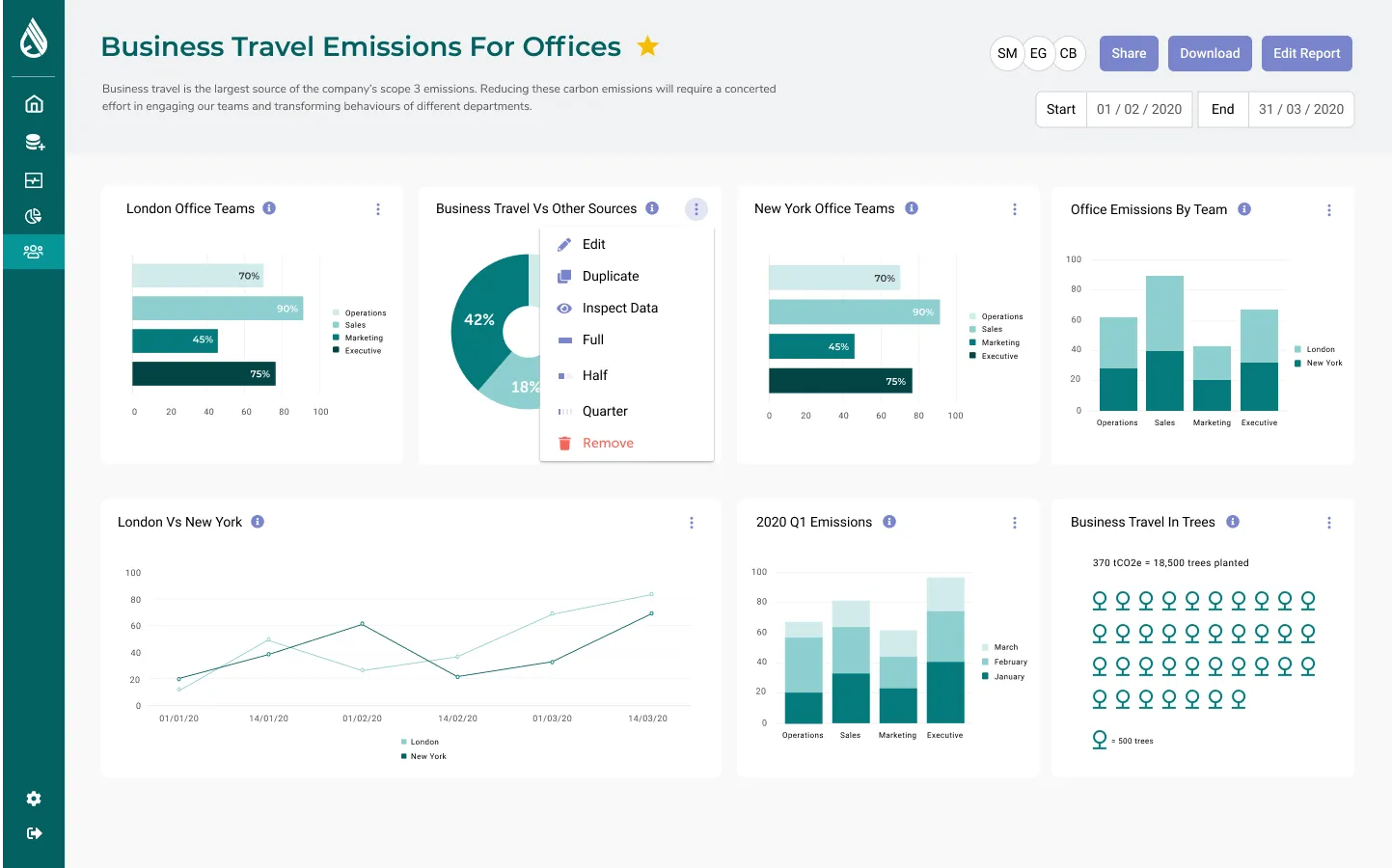 Emitwise, a London-based carbon accounting company established in 2019, offers a platform designed to help businesses track, report, and lower their carbon emissions across operations and supply chains.
Emitwise, a London-based carbon accounting company established in 2019, offers a platform designed to help businesses track, report, and lower their carbon emissions across operations and supply chains.
However, it’s worth noting that Emitwise isn’t as heavily funded as some of the bigger players in the market,something to keep in mind when evaluating enterprise software options.
Features:
- Real-time monitoring
- Granular emissions tracking
- Emission factor selection
- Audit trails
- Compliance reporting
| Pros | Cons |
|
|
14. Sweep
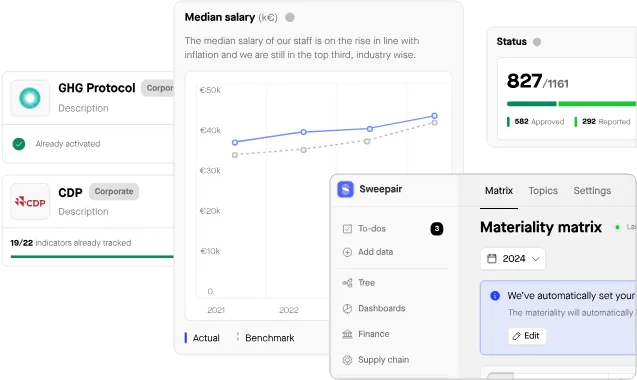 Sweep is a carbon management platform designed with collaboration in mind. It enables teams to assign responsibilities, monitor progress, and view essential data in a single, unified system.
Sweep is a carbon management platform designed with collaboration in mind. It enables teams to assign responsibilities, monitor progress, and view essential data in a single, unified system.
Aimed at large enterprises, Sweep’s ESG and carbon data solution supports the tracking, reporting, and reduction of emissions. The platform helps organizations measure their footprint, implement reduction strategies, and work closely with supply chain partners to drive meaningful impact.
Features:
- Comprehensive carbon tracking
- Value chain collaboration
- Regulatory compliance support
- Audit documentation
- Sustainability strategies
| Pros | Cons |
|
|
15. Workiva
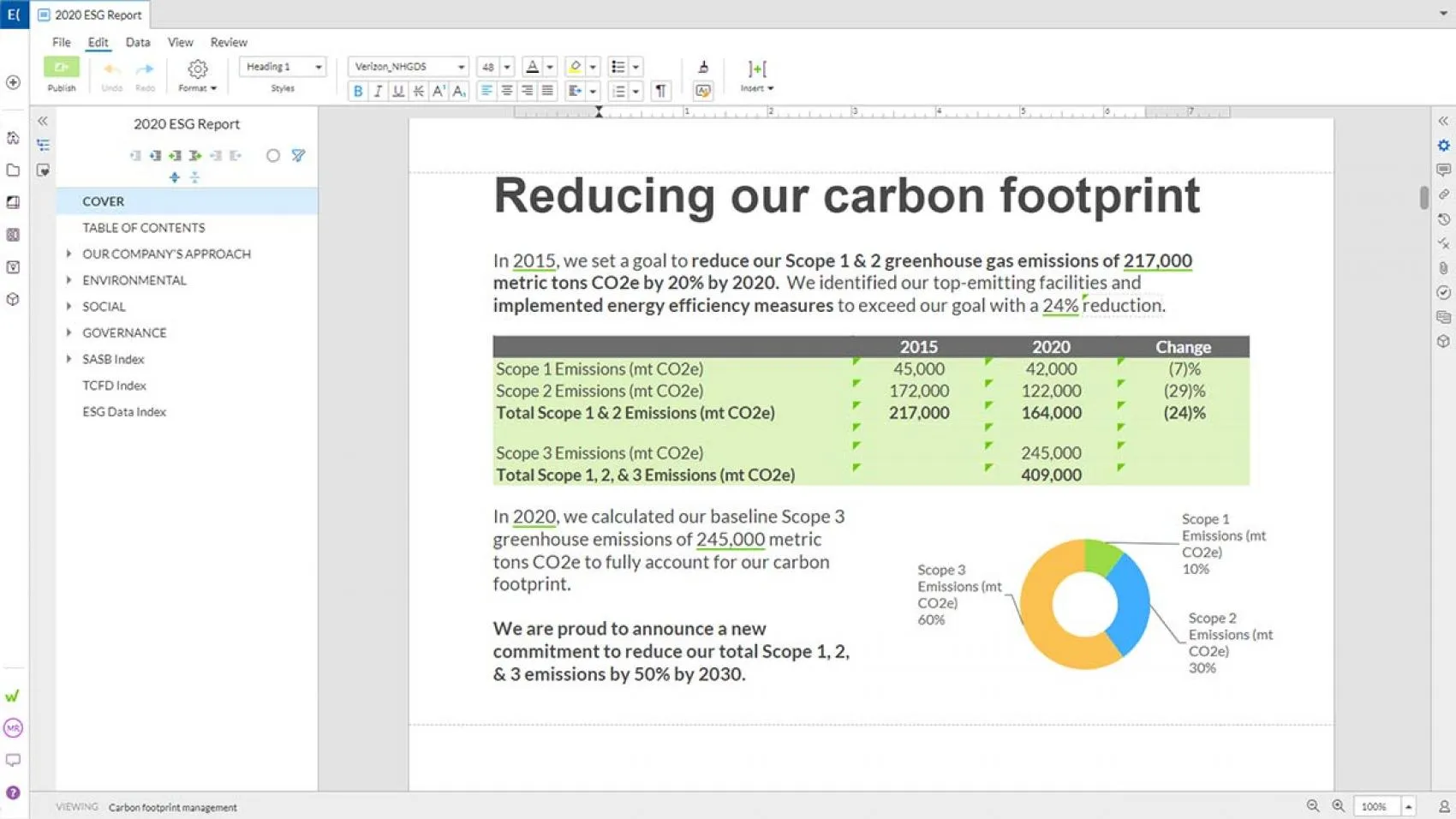 Workiva, best known for its ESG reporting tools, has extended its platform to include carbon tracking features. The Workiva Carbon module allows organizations to gather, manage, and disclose greenhouse gas emissions data across multiple scenarios.
Workiva, best known for its ESG reporting tools, has extended its platform to include carbon tracking features. The Workiva Carbon module allows organizations to gather, manage, and disclose greenhouse gas emissions data across multiple scenarios.
It also connects with financial and operational systems to support streamlined data collection and analysis.
Features:
- Integrated ESG reporting
- Framework alignment
- Dynamic report design
- Audit-ready disclosures
- Real-time data management
| Pros | Cons |
|
|
Key Features in Carbon Accounting Software
When evaluating carbon accounting solutions, businesses should focus on these 6 essential capabilities:
1. User-friendly and robust data input tools
Reliable carbon accounting starts with clean, complete data. Look for platforms that support manual entry, bulk uploads, and API integrations to streamline data collection, so organizations can fine-tune their ESG strategy.
2. Automated and accurate carbon footprint calculations
A strong solution should automatically calculate your company’s emissions across Scope 1, 2, and 3. These calculations form the foundation for compliance, reporting, and setting realistic reduction goals.
3. Comprehensive emissions reporting
Choose software that supports detailed GHG reporting, both for compliance and voluntary disclosure. Flexible export options—such as publish-ready PDFs and raw data files—are essential for internal and external use.
4. Decarbonisation target setting and tracking
Effective tools should help you define, visualise, and monitor emissions reduction targets using recognized methodologies like Science-Based Targets (SBTs). Interactive graphs and visualisations make progress easy to understand.
5. Real-time performance tracking and analytics
Advanced dashboards allow teams to track emissions and net-zero efforts continuously. Built-in analytics turn raw data into actionable insights, supporting smarter and faster sustainability decisions.
6. Actionable decarbonisation planning tools
The software should identify high-impact reduction opportunities and incorporate Scope 3 data for a full-supply-chain approach. Features that help manage emissions projects make implementation smoother and more scalable.
Using Dedicated Carbon Accounting Tools vs. Building Internal Solution
 While the growing adoption of carbon accounting is a big step forward in addressing the climate crisis, actually measuring emissions isn’t simple. It requires structured data, clear methodology, and alignment with global frameworks.
While the growing adoption of carbon accounting is a big step forward in addressing the climate crisis, actually measuring emissions isn’t simple. It requires structured data, clear methodology, and alignment with global frameworks.
So the question becomes: should your business build its own carbon accounting solution or use dedicated software?
Building a custom system in-house may seem appealing if you want full control or already have internal tools in place. But in reality, this approach demands significant time, technical resources, and deep sustainability expertise.
For most companies—especially those without a large ESG team—creating, maintaining, and validating a reliable system from scratch can become overwhelming fast.
On the other hand, using dedicated carbon accounting software gives you access to prebuilt emissions factors, automated data collection, and reporting tools aligned with international standards.
For small to mid-sized businesses, especially, dedicated software is often the smarter choice. It’s faster to implement, easier to manage, and allows your team to focus more on reducing emissions than manually calculating them.
How to Choose the Most Suitable Carbon Accounting Software
Selecting the right carbon accounting software starts with understanding your organisation’s unique requirements and sustainability objectives. It’s important to choose a platform that can accurately track and manage emissions based on your industry and operational scope.
Evaluate whether the software offers strong reporting functions, integrates easily with your existing systems, and is user-friendly. Also, ensure it complies with established frameworks such as the Greenhouse Gas Protocol or ISO 14064 for credible and consistent emissions reporting.
Conclusion
Carbon accounting software plays a critical role in helping businesses track emissions and meet sustainability standards efficiently. With the right tool, companies can automate reporting, set reduction targets, and align with global climate goals faster.
If your team is just starting its sustainability journey, HashMicro gives you a solid operational data foundation. It centralizes your fuel, energy, procurement, and logistics data—making ESG tracking easier and future carbon reporting less overwhelming.
HashMicro is ideal for businesses that want to stay organized while preparing for climate-related disclosures down the line. Try a free demo to see how it can support your transition to smarter, sustainability-ready operations!

FAQ on Carbon Accounting Software
-
How do I choose the best carbon accounting software for my company?
Start by understanding what your company needs. Do you only need to track energy use, or do you also want to monitor your entire supply chain? Look for software that fits your industry, supports Scope 1, 2, and 3 emissions, and can grow with your business. It’s also helpful if it integrates with your current systems and follows global standards like the Greenhouse Gas Protocol.
-
What is a carbon accounting tool?
A carbon accounting tool is software that helps businesses measure and keep track of their greenhouse gas emissions. It collects data from different parts of your operations—like electricity use, travel, or supplier activities—and calculates how much carbon your company is responsible for. This makes it easier to report, reduce, and manage your environmental impact.
-
Why do businesses need carbon accounting software?
With stricter sustainability rules and growing pressure from investors and customers, businesses need to understand and reduce their emissions. Carbon accounting software makes this easier by automating data tracking and generating accurate reports. It also helps businesses stay compliant and take action to meet their climate goals.
-
What are the advantages of using carbon accounting software over manual calculations?
Manual tracking can be slow, messy, and prone to errors—especially if you’re using spreadsheets. Carbon accounting software speeds things up, ensures accuracy, and often comes with built-in tools for reporting and goal-setting. It also helps teams stay organized and makes it easier to prepare for audits or meet regulatory deadlines.
-
What are the advantages of using carbon accounting software over manual calculations?
Manual tracking can be slow, messy, and prone to errors—especially if you’re using spreadsheets. Carbon accounting software speeds things up, ensures accuracy, and often comes with built-in tools for reporting and goal-setting. It also helps teams stay organized and makes it easier to prepare for audits or meet regulatory deadlines.
-
How much does carbon accounting software cost?
Prices vary depending on the features, number of users, and the size of your company. Some tools offer basic packages for small businesses, while others charge more for advanced reporting, support, and integration options. It’s best to request a quote based on your specific needs or try a demo before deciding.



